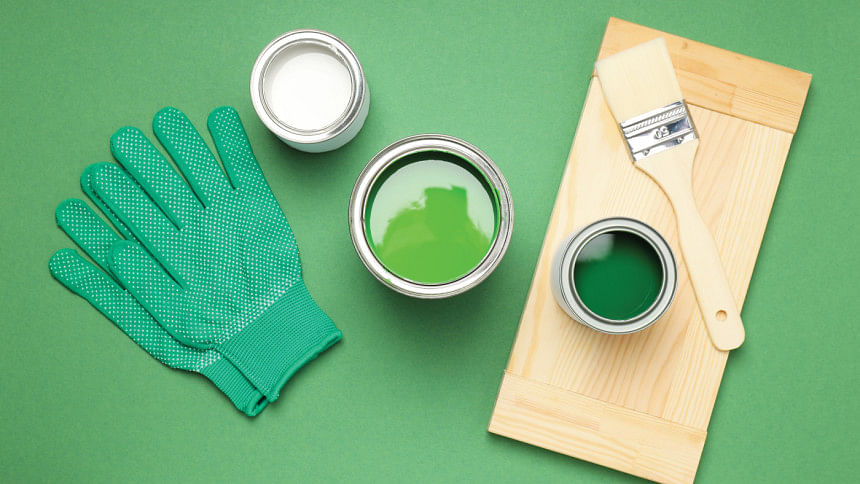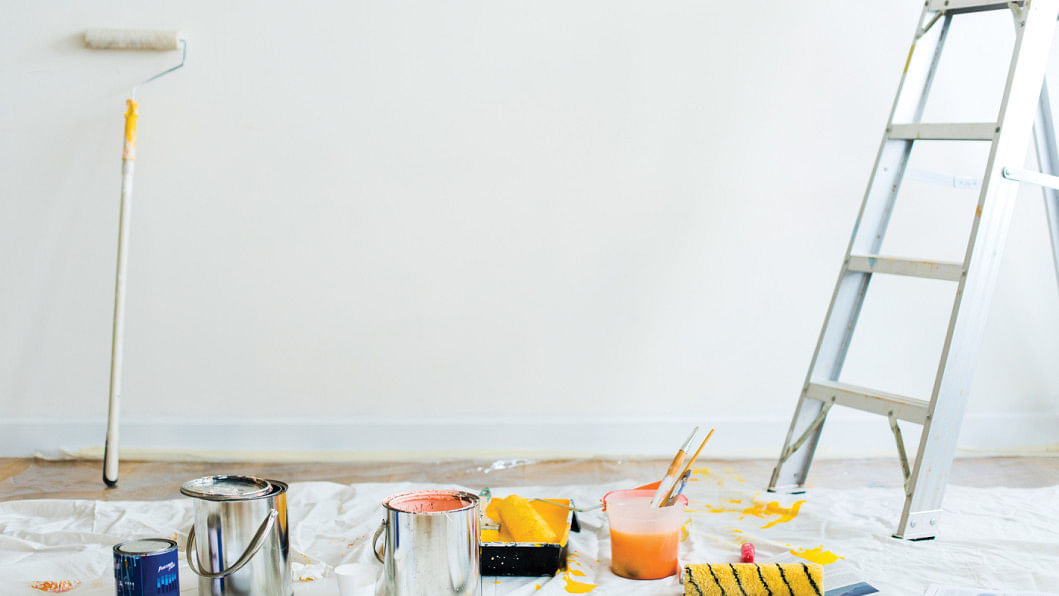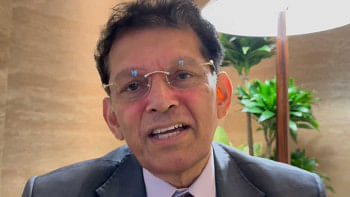Eco-friendly paint in Bangladesh: A surface-level trend or deeper change?

In Bangladesh, when people talk about pollution, it's rarely about what's inside their homes. The focus is on plastic waste, rivers choked by industry, or traffic-fuelled smog. Yet ironically, some of the most harmful toxins may be right within the walls, camouflaged behind bright, glossy colours. As cities swell and the real estate market explodes, the paint we choose to put on our walls becomes more than an aesthetic decision; it becomes a public health and environmental one.
Colour that pollutes?
Most consumers in Bangladesh remain unaware that many conventional paints release volatile organic compounds (VOCs), lead, formaldehyde, and other toxic particles into the air long after the paint dries. This process, called "off-gassing," contributes significantly to indoor air pollution, especially in sealed apartments and institutional spaces where ventilation is poor. Bangladesh has no enforceable national standard for VOCs or lead content in paint, allowing brands to label products as "eco-friendly" without meaningful regulation
What's even more concerning is that many consumers take those labels at face value. According to Berger Paints Bangladesh Limited, this gap between marketing and reality is one of the largest misconceptions in the industry. "In Bangladesh, 'eco-friendly paint' is often reduced to a single metric: low VOCs," said an expert from the company. "Cutting volatile organic compounds certainly matters, but genuine environmental stewardship should reach far beyond that baseline."
Beyond the label
While low-VOC paints are a starting point, Berger argues that the future lies in active environmental solutions.
Its "Breathe Easy" line meets zero-VOC standards and carries the Green Label from the Singapore Environment Council – one of the region's strictest benchmarks. But Berger's innovation goes a step further. Its Eco Coat range doesn't just avoid harm; it actively contributes to cleaner air.
The paint is infused with Air Purifying Technology (APH) that neutralises airborne pollutants such as carbon dioxide, carbon monoxide, methane, sulfur and nitrogen oxides, and formaldehyde. In a country with some of the world's worst air quality rankings, this leap from passive coating to active purifier is a game changer.
And it's not just about what's added—it's also about what's left out. "Berger made its entire portfolio lead-safe back in 2012, years ahead of most competitors," the company noted. "Eco-friendly paint shouldn't merely avoid doing damage; it should improve the spaces we live in."

Is this only for the rich?
A common belief in Bangladesh is that eco-friendly paints are for the elite – an add-on luxury for those designing posh urban homes. That, too, is changing. "Not long ago, toxin-free wall coatings were dismissed as an upscale indulgence," the Berger expert explained. "But they are now becoming a practical, attainable upgrade for middle-income homes across Bangladesh."
Several factors are pushing this shift. First, rising public concern over indoor air quality has led families to seek safer alternatives. Second, companies like Berger are offering a wider variety of toxin-free products available in different finishes, pack sizes, and price points. The narrowing price gap is slowly levelling the playing field. Third, widespread awareness campaigns through TV, social media, and contractor workshops are reshaping how paint is perceived, not just as colour, but as a health decision.
Today, hospitals, schools, and even mid-tier offices are specifying air-purifying paints, not as showpieces but as standard practice. In many homes, full-room repaint projects now factor in whether the coating can eliminate up to 90 per cent of indoor pollutants. "What began as a high-end preference is rapidly becoming a national expectation—because clean, healthy air should never be a privilege," the company emphasised. "It should be the baseline for every Bangladeshi household."
Debunking myths around sustainable paints
Despite these advancements, myths persist. Many still think eco-friendly paints are prohibitively expensive, fragile in finish, or simply a marketing gimmick. But the truth is that formulations have evolved. "Consumers often question their durability and finish, assuming these paints don't last as long or look as good," said the Berger expert. "There is also a mistaken belief that simply having a low-VOC label guarantees full safety, which ignores other harmful substances like lead and formaldehyde."
Brands like Berger are actively dismantling these misconceptions by offering durable, aesthetic, and safer alternatives. But awareness must keep pace with innovation. Until the average consumer is as concerned about their wall paint as they are about drinking water or cooking oil, progress will be incremental.
Looking Ahead: Painting a better future
Eco-friendly paint in Bangladesh is no longer a fringe idea – it's a quiet revolution gathering pace. But this revolution must be grounded in truth, not just trends. A can of paint is not just a splash of colour. It's an environmental choice, a health decision, and a reflection of values.
As more consumers wake up to this reality and brands continue to innovate, perhaps one day "eco-friendly" won't be a selling point at all. It will simply be expected.

 For all latest news, follow The Daily Star's Google News channel.
For all latest news, follow The Daily Star's Google News channel. 



Comments